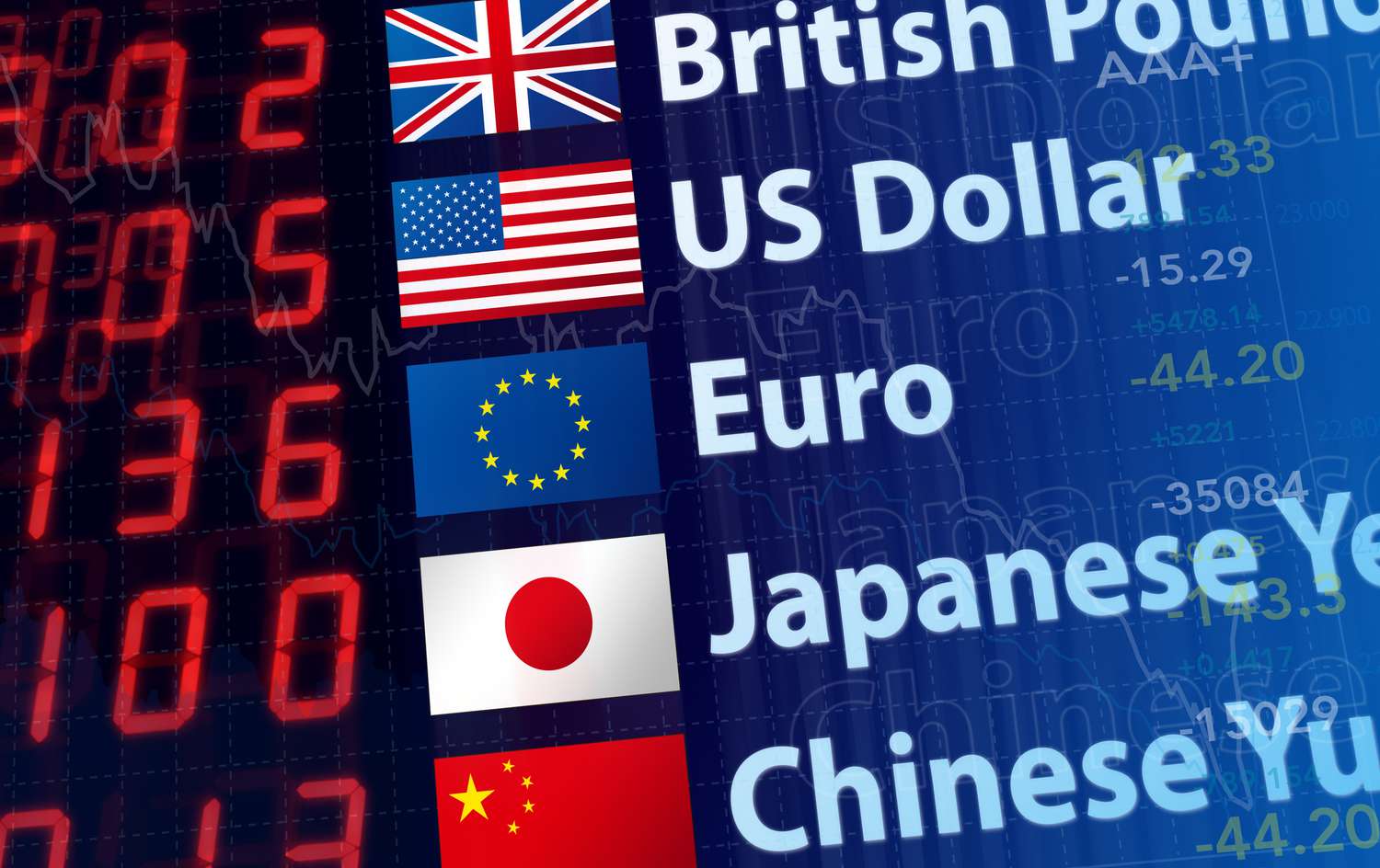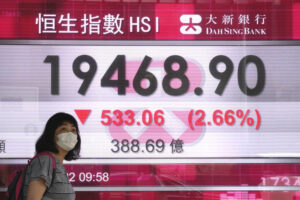The recent debt ceiling deal struck between US President Biden and House Speaker Kevin McCarthy has sent ripples through the market, influencing various assets and market sentiment. In this article, we will explore the effects of this deal on US stocks, Treasury yields, the US dollar, and different currencies. Additionally, we’ll analyze the implications of consumer confidence and shed light on key events and economic data scheduled for Wednesday, including employment data and public appearances by Federal Reserve officials.
Debt Ceiling Deal’s Impact on Market Sentiment
The US stock market experienced mixed results following the debt ceiling deal, as investors grappled with uncertainties and hurdles surrounding the agreement. Treasury yields witnessed a sharp drop, contributing to a mixed performance of the US dollar. Simultaneously, commodity and emerging market currencies faced risk aversion, influenced by the overall market sentiment.

Consumer Confidence and Economic Outlook
In May, consumer confidence in the US dropped, albeit less than expected, reflecting the cautious outlook among consumers. This decline raises questions about future spending patterns and economic growth. Attention will now turn to employment data, assuming Congress delivers on the debt ceiling issue. Moreover, the Beige Book release by the central bank will provide further insights into the state of the economy.
EUR/USD and European Market Indicators
EUR/USD saw a modest recovery after hitting a monthly low, driven by lower-than-expected inflation numbers released by Spain. As Germany and France prepare to announce their inflation data, a potential decline in annual rates may impact European Central Bank tightening expectations.
GBP/USD and the Bank of England
GBP/USD experienced a climb amid expectations of further tightening by the Bank of England (BoE). Conversely, the EUR/GBP pair tumbled to a multi-month low, influenced by these developments and their implications for monetary policy.
Yen’s Outperformance and Japanese Market News
The yen outperformed following an emergency meeting between the Ministry of Finance, the Bank of Japan, and the Financial Services Agency. Additionally, the decline in government bond yields contributed to the yen’s strength. USD/JPY dropped below 140.00 and maintained a bearish bias.
USD/CHF and Swiss Economic Indicators
USD/CHF reached two-month highs before retracing slightly. While Switzerland reported 0.6% Q1 growth, the KOF Leading Indicators saw a significant decline in May. The focus now turns to retail sales data scheduled for Wednesday.
AUD/USD and RBA’s Monetary Policy
AUD/USD faced resistance near 0.6550 and pulled back ahead of key events in the Asian session. Reserve Bank of Australia (RBA) Governor Lowe’s appearance before a Senate Committee and the release of monthly inflation data will be closely monitored, setting the stage for the upcoming monetary policy meeting.
USD/CAD and Crude Oil Prices
USD/CAD remained range-bound around 1.3600 despite the decline in crude oil prices. The WTI barrel experienced a significant drop, impacting the Canadian economy. Attention now shifts to Canada’s March growth numbers for further insights.
NZD/USD and New Zealand Market Data
NZD/USD observed a marginal decline, marking the lowest daily close since November but remaining above 0.6000. Market participants eagerly await the release of the ANZ Activity Outlook and Business Confidence data, which will provide a glimpse into the economic outlook for New Zealand.
Precious Metals and Cryptocurrencies
Gold experienced a positive day, stabilizing near $1,960 after hitting fresh monthly lows. Silver also recovered, reclaiming the $23.00 mark. Meanwhile, cryptocurrencies, including BTC/USD and Ethereum, witnessed modest gains amid overall market conditions.
Turkish Lira’s Volatility
The Turkish Lira faced sharp depreciation following Erdogan’s victory in the presidential runoff. USD/TRY climbed nearly 2%, reaching a new record high at 20.40, reflecting ongoing concerns surrounding the country’s political and economic stability.
Conclusion
The debt ceiling deal struck between US President Biden and House Speaker Kevin McCarthy has had a significant impact on market sentiment, with repercussions observed across various assets and currencies. As investors closely monitor employment data, public appearances by Federal Reserve officials, and key economic indicators, market participants will seek clarity and guidance amidst the evolving landscape.






Your article helped me a lot, is there any more related content? Thanks!
buying from online mexican pharmacy: cmq mexican pharmacy online – purple pharmacy mexico price list
mexican online pharmacies prescription drugs
https://cmqpharma.online/# medicine in mexico pharmacies
buying from online mexican pharmacy
I was looking through some of your blog posts on this website and I conceive this internet site is real informative! Retain putting up.
Hi, Neat post. There is an issue with your web site in internet explorer, could test this… IE still is the market leader and a big component of other people will leave out your wonderful writing because of this problem.
mexico pharmacy: cmq pharma mexican pharmacy – mexican drugstore online
reputable indian online pharmacy: top 10 pharmacies in india – buy prescription drugs from india
http://indiapharmast.com/# india pharmacy
Online medicine home delivery top 10 online pharmacy in india top 10 pharmacies in india
https://canadapharmast.com/# canadian pharmacy 24h com
reliable canadian pharmacy: canadian pharmacy – reputable canadian online pharmacies
mexican mail order pharmacies: mexico pharmacies prescription drugs – mexican pharmaceuticals online
mexican online pharmacies prescription drugs medication from mexico pharmacy reputable mexican pharmacies online
canada online pharmacy: canada pharmacy world – trusted canadian pharmacy
buying prescription drugs in mexico: mexican mail order pharmacies – purple pharmacy mexico price list
https://indiapharmast.com/# indian pharmacy online
vipps approved canadian online pharmacy canada rx pharmacy canadian pharmacy phone number
northern pharmacy canada: canadian pharmacy ed medications – vipps canadian pharmacy
https://canadapharmast.com/# canadianpharmacyworld com
pharmacy canadian canadian drugstore online reliable canadian online pharmacy
canadian pharmacy price checker: canadian drugs pharmacy – canadian pharmacy uk delivery
mail order pharmacy india: india online pharmacy – online pharmacy india
canadian pharmacy no scripts: legal canadian pharmacy online – ed meds online canada
indian pharmacy best online pharmacy india buy medicines online in india
https://canadapharmast.online/# pharmacy in canada
mexico drug stores pharmacies: mexico pharmacy – п»їbest mexican online pharmacies
mexican rx online: medicine in mexico pharmacies – buying prescription drugs in mexico online
http://foruspharma.com/# buying from online mexican pharmacy
medication from mexico pharmacy mexico pharmacy reputable mexican pharmacies online
mexico pharmacies prescription drugs: mexico pharmacy – mexican border pharmacies shipping to usa
indianpharmacy com: indian pharmacy online – buy medicines online in india
online canadian pharmacy reviews: canadianpharmacy com – canada drug pharmacy
https://indiapharmast.com/# pharmacy website india
cheapest online pharmacy india world pharmacy india top online pharmacy india
top online pharmacy india: Online medicine home delivery – pharmacy website india
http://amoxildelivery.pro/# can i purchase amoxicillin online
buy cipro online buy cipro cipro pharmacy
buying doxycycline online in usa: doxycycline canadian online pharmacy – doxycycline minocycline
http://amoxildelivery.pro/# 875 mg amoxicillin cost
paxlovid price: Paxlovid buy online – paxlovid price
https://ciprodelivery.pro/# ciprofloxacin over the counter
http://ciprodelivery.pro/# where can i buy cipro online
amoxicillin 800 mg price amoxicillin 500mg where can i buy amoxicillin over the counter uk
where to buy doxycycline in australia: doxycycline 150 mg cost comparison – doxycycline cheap uk
https://amoxildelivery.pro/# amoxicillin no prescription
https://clomiddelivery.pro/# buying clomid
http://amoxildelivery.pro/# amoxicillin buy online canada
buy doxycycline capsules doxycycline 5553 doxycycline capsules 40 mg
can you get clomid without a prescription: how can i get clomid without a prescription – cost of clomid without insurance
http://paxloviddelivery.pro/# paxlovid for sale
https://clomiddelivery.pro/# can i get cheap clomid online
http://amoxildelivery.pro/# amoxicillin 500 mg cost
http://ciprodelivery.pro/# ciprofloxacin mail online
antibiotics cipro antibiotics cipro buy ciprofloxacin over the counter
buy ciprofloxacin: buy ciprofloxacin over the counter – buy cipro online canada
http://clomiddelivery.pro/# where buy generic clomid without a prescription
https://ciprodelivery.pro/# buy generic ciprofloxacin
https://paxloviddelivery.pro/# paxlovid price
ciprofloxacin 500mg buy online cipro pharmacy ciprofloxacin generic price
doxycycline 200mg price in india: doxycycline cream over the counter – buy doxycycline 100mg canada
https://doxycyclinedelivery.pro/# can i buy doxycycline online